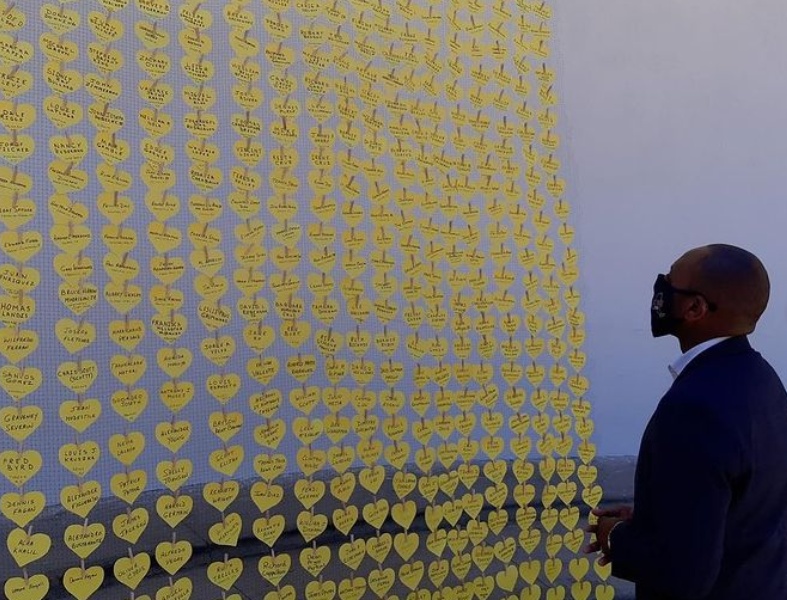
Queens Borough President Donovan Richards at Forest Park for Queens Covid Remembrance Day remembering lives lost due to COVID-19 (Instagram)
May 5, 2021 By Allie Griffin
The total number of Queens residents killed by COVID-19 is approaching 10,000, although the daily death count is now in the single digits.
The borough has had a daily death toll in the single digits for nearly a week — a far cry from the height of the pandemic when 201 residents died in a single day on April 6, 2020.
Queens has experienced the second greatest loss of life among the boroughs at 9,760 deaths, just behind Brooklyn.
The number of deaths includes both 8,424 confirmed COVID-19 deaths and 1,336 probable COVID-19 deaths — in which a person’s cause of death is listed as COVID-19, but a positive test is not on record.
In Brooklyn, 10,192 people have died, including both probable and confirmed deaths.
COVID-19 has hit elderly Queens residents the hardest. Nearly half the confirmed COVID-19 deaths in Queens were people 75 and older—with 4,075 residents dying.
The confirmed COVID-19 death toll also showed other disparities in terms of who died in Queens.
Significantly more men have been killed by the virus than women—with 5,064 men succumbing to the virus compared to 3,357 women.
Broken down by race, Hispanic/Latino Queens residents have been killed by COVID-19 in the greatest numbers. According to city data, 2,359 Hispanic Queens residents have died, followed by 2,216 white Queens residents.
When adjusted for population size — the death rate in Queens has been highest among Latino residents, followed by Black residents. About a month into the pandemic, city data revealed that Black and Latino New Yorkers were dying at twice the rate of white New Yorkers.
Broken down by ZIP code, Corona (11368) has experienced the largest number of COVID-19 deaths both in Queens and across the city with 524 people perishing.
The largely Hispanic neighborhood — which in a tragic twist of fate shares a name with the virus — became known as the “epicenter of the epicenter” of the pandemic in the U.S at its height.
Corona residents grew used to hearing constant sirens and the neighborhood made national news.
Far Rockaway (11691) is another neighborhood that has seen a huge loss of life — the second most in Queens and third most citywide. The predominantly Black area has lost 454 residents to COVID-19.
Local legislators like Queens Borough President Donovan Richards — who was the council member representing the neighborhood last year — said that many lives in Far Rockaway could have been spared from the devastating virus if the area had gotten COVID-19 testing from the city sooner.
The Flushing, Murray Hill area (11354) is another hard-hit neighborhood, with 402 residents having died — making it the third highest death toll in Queens. However, when adjusted by population size, the ZIP code has the second highest COVID-19 death rate in the city, behind East New York (11239).
The below neighborhoods have the greatest number of COVID-19 deaths in Queens.
- 1. Corona (11368): 524 deaths
- 2. Far Rockaway (11691): 454 deaths
- 3. Flushing, Murray Hill (11354): 402 deaths
- 4. Elmhurst (11373): 362 deaths
- 5. Jackson Heights (11372): 324 deaths
- 6. Jamaica Hills, Jamaica Estates (11432): 318 deaths
- 7. Flushing (11355): 308 deaths
- 8. Woodside, Maspeth (11377): 295 deaths
- 9. Forest Hills (11375): 267 deaths
- 10.Rochdale, Springfield Gardens, South Jamaica (11434): 262 deaths
The map below shows the number of COVID-19 deaths and cases, as well as the death rate in each Queens ZIP code.
